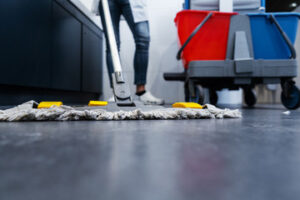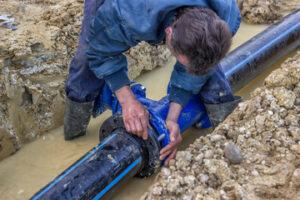Security guard jobs work in various settings, including commercial properties, residential complexes, and public spaces. Their primary roles are to deter crime, conduct patrols, monitor surveillance equipment, and control access.

A high level of professionalism is essential for security personnel to inspire confidence and trust. They must always act with integrity and be able to resolve conflicts.
Security guards should be aware of the risks they face on the job. This could include armed attacks, terrorist incidents and even natural disasters such as earthquakes. They should have a clear line of communication with their manager, and also be on the lookout for suspicious activity. It’s also a good idea for them to know what types of crime take place in the area they are patrolling and how to spot them.
In order to keep themselves safe, it’s important for them to remain physically fit and mentally alert. If they’re too tired or stressed, they will be less likely to pay attention to their surroundings and may miss important details that can lead to an emergency situation. To avoid this, it’s recommended that they take regular breaks during their shift and practice techniques such as deep breathing and meditation to calm themselves.
Additionally, they should be familiar with the facility layout and any possible hiding places. This way, they’ll be able to respond quickly to any situations that might arise on the premises. For example, they should know where to find all the exits in case of an emergency and what to do if they suspect someone is trying to break in.
In some cases, they may need to wear additional protective gear depending on the type of business and location. Armed guards will typically wear bulletproof vests, while unarmed security guards may need to use stab vests, spike protection or anti-slash gloves. All of these safety measures can help them prevent injuries during their patrols. Additionally, it’s a good idea for them to build relationships with local law enforcement agencies. This will give them a quick response time and allow them to collaborate with them on security threats in the area.
Security
Security guards take a variety of measures to ensure that people, facilities and property are safe. This may include conducting regular patrols of a building, providing access control by checking identification and preventing unauthorized entry to a secured area or site, and responding to emergencies such as fires and medical incidents by assessing the situation, taking action when necessary, and alerting law enforcement and emergency services.
Security personnel are trained in de-escalation and conflict resolution techniques to handle situations involving disagreements, disturbances or disputes. They also work to monitor and respond to security breaches such as alarms or suspicious activity. In addition, some security guards may provide customer service to clients or guests by greeting them, providing directions and offering assistance.
As security guards are observant and attentive, they are able to spot potential issues or security risks before they escalate. For example, they are often able to notice things such as unusual vehicle movements or suspicious behavior from people walking around.
Working as a security guard can be extremely rewarding, particularly when you are employed with a security company that is dedicated to making a positive difference in the community. For example, our team at Paladin recently helped a local man get treatment for his substance abuse.
Security guards who have experience and additional training can advance to supervisory or managerial roles. This can lead to higher salaries, more benefits and a greater sense of responsibility and autonomy. If you are considering becoming a security guard, make sure to research the industry and attend industry events to meet prospective employers. Also, don’t be afraid to ask for help and advice from family, friends and other security professionals.
Communication
Security guards often work with a team of other professionals, and clear verbal communication is a key part of their job. They communicate important safety protocols and business updates, relay information during emergencies, and convey directions to visitors. They also use non-verbal communication, such as body language and facial expressions, to communicate with each other and their teams during crisis situations.
Security officers who effectively communicate can help defuse tension and resolve conflicts before they escalate. Whether they’re patrolling an office park, managing access control at a gated community, or responding to a disturbance at a hospital, they can calm the situation by listening attentively and mediating a conversation that leads to a peaceful resolution. Ongoing training in conflict resolution equips security guards with skills and strategies that they can implement to achieve this.
In addition to facilitating dialogue, security guards are able to identify suspicious people and act as a crime deterrent by observing their movements and behaviors. They also use this insight to respond quickly and appropriately in an emergency situation, minimizing harm to the people or property involved. Security officers must also be able to document their observations and actions in incident reports.
When something out of the ordinary occurs during a security guard’s shift, they must be able to describe the situation accurately to their superior and follow any instructions that they receive. In addition, they may have to report on their experiences to law enforcement officials or the public if the situation warrants it. They must be able to explain exactly what happened, including the identities of all individuals who were involved, how they responded, and the outcome of the incident.
Physical Requirements
Security guards must have the physical ability to patrol and remain alert for long periods of time. They are often the first responders to emergencies and must be able to assess situations, quickly identify any irregularities or suspicious activity, and communicate with law enforcement and emergency services when necessary. They also need to be able to carry and move heavy objects when needed.
Because security guards work in a wide range of settings, they must be able to adapt their duties depending on the location. For example, a security guard at a business may need to interact with customers and provide escort protection while another security guard in a hospital may need to monitor patient safety and security. In addition, they should be able to work in a variety of weather conditions.
Security guard duties can vary from a basic escort service to patrolling a facility and monitoring surveillance equipment. They can also be responsible for identifying and reporting security infractions, investigating suspicious activities, interviewing victims, and collaborating with law enforcement during investigations. In crowded environments like events and public gatherings, security guards can help control crowds, offer information and directions, and maintain order in the event of a disturbance.
Many security guard positions require a high school diploma or equivalent combined with relevant training and on-the-job experience. In some cases, security guards are required to have a valid driver’s license and pass a background check and drug test. Additionally, if they are armed, they must be at least 21 years old and have passed a gun qualifications test specific to their state. In addition, they must attend regular training and drills to stay updated on security protocols, legal regulations, and any other changes in their roles.
Training
Security guards undergo extensive training before they are ready to work in the field. The training is often provided by the company they are employed by and may include practice at a firing range, as well as instruction in weapon handling. Armed security guards are given even more in-depth instruction and are required to pass a firearms competency exam.
After they are trained, the security guards are assigned to various locations and sites. Businesses, government buildings, hotels and restaurants are just a few of the venues that hire armed and unarmed security guards to protect them.
Some of the duties that security guards perform include patrolling and monitoring activity, securing doors and windows, and ensuring compliance with safety protocols. Other responsibilities involve responding to incidents, including terrorist attacks and natural disasters. Security guards are often the first responders to these emergency situations, so it is important that they are well-trained to handle these critical incidents.
Having good communication skills is another desirable trait for a security guard. This will allow them to relay information effectively, de-escalate situations, and coordinate with other security personnel. They also need to be able to write clear and concise reports. Communication training is a great way to develop these skills and EdApp offers free communication courses for security guards to improve their abilities.
The presence of security guards is a visible deterrent to criminals and people who would attempt to commit theft, vandalism or physical assaults. The security guards are trained to detect suspicious behavior and can quickly contact authorities if necessary. In one incident, a security guard heard a man shouting for help in the water and contacted paramedics immediately who were able to rescue him from the river.








